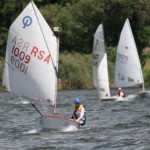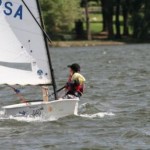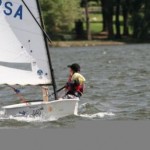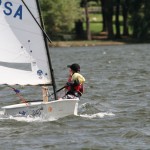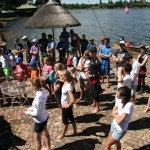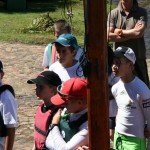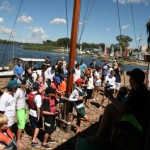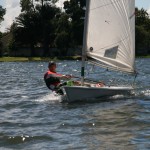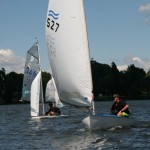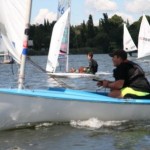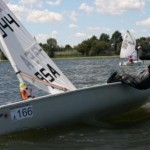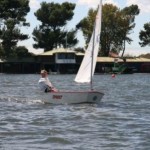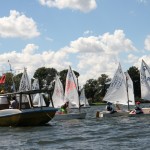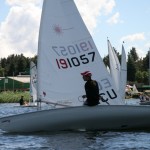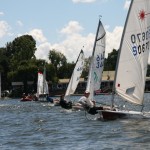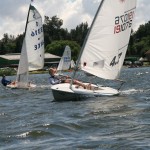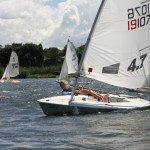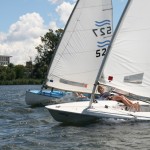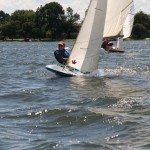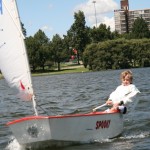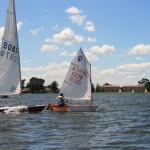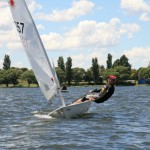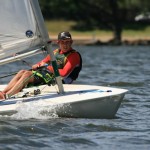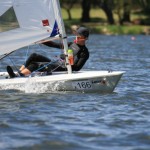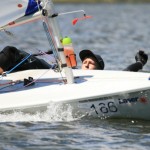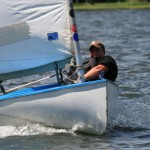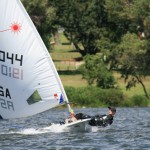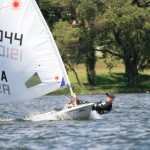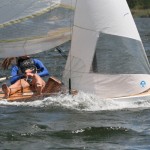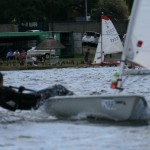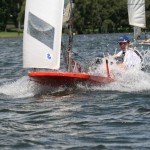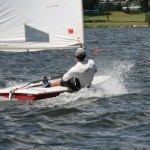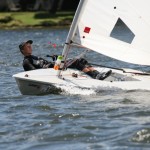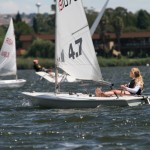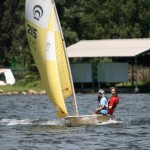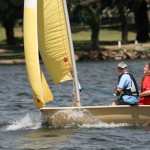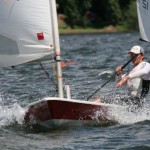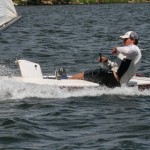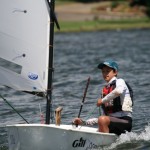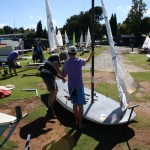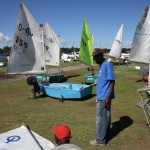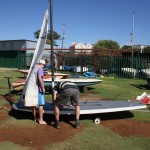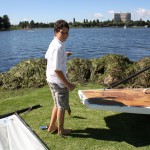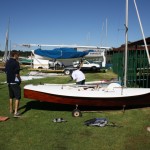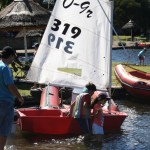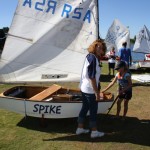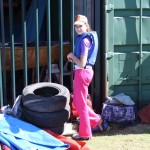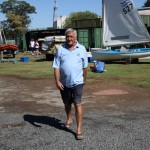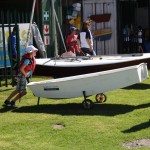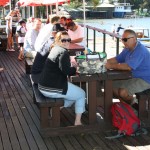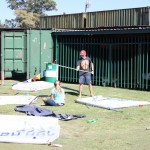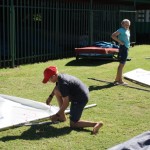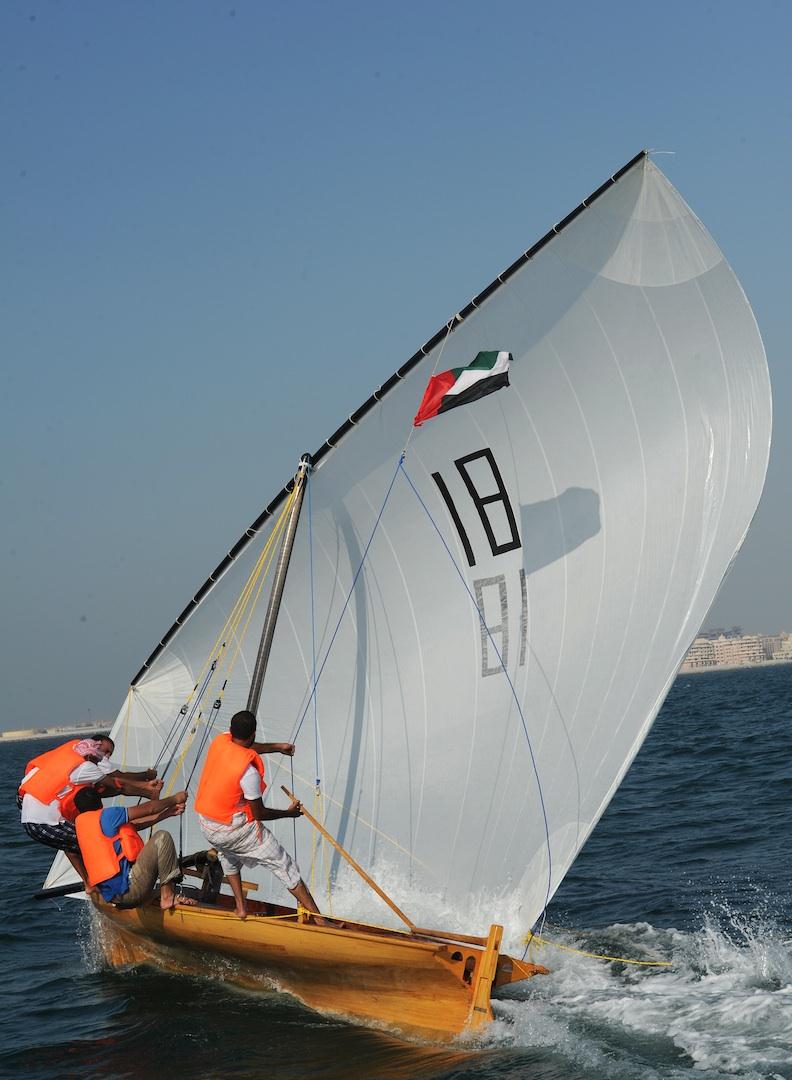Wondering what that boating word is that all the other sailors use? Our glossary should solve most of your boating jargon problems. If anyone has a boating term or terms they would like to add please contact us.
Aft: Toward the back of the boat.
Bearing Away: Turning away from the wind.
Boom: A pole running at a right angle from the mast.
Clear Astern and Clear Ahead: One boat is clear astern of another when her hull and equipment in normal position are behind a line abeam from the aft most point of the other boat’s hull and equipment in normal position. The other boat is clear ahead.
Cunningham (also called a Downhaul): Adjusting the tension of a sail’s luff.
Head Up: Sailing closer to the wind.
Irons: Boat is pointing into the wind, sail is flapping and probably also going backwards.
Kicker (also called a Vang): A device used to keep the boom from rising.
Lay line: The course on which your boat, sailing close – hauled on starboard tack, can just make a windward mark which is to be rounded to port is the starboard – tack lay line for that mark, and the most windward line on which you would approach the mark on port tack is the port – tack lay line.
Leeward: The direction the wind is going downwind.
Luffing: Pointing the boat into the wind – sail flapping.
Mainsheet: Line that controls the position of the mainsail.
Mark (buoy): An object the sailing instructions require a boat to pass on a specified side.
Mast: A pole usually going straight up from the deck (height can be tuned for different body weights), used to attach sail and boom.
Obstruction: Is an object that a boat could not pass without changing course substantially to avoid it. e.g. a mark, a rescue boat, the shore, perceived underwater dangers or shallows.
Outhaul: An adjuster that tensions the sail’s foot.
Port: The left side of the boat when you are looking forward.
Port Tack: Wind across the port side.
Reaching: Sailing with the sail eased.
Reefing: Reducing the amount of sail area.
Rig: The arrangement of a boat’s mast, sails and spars.
Rudder: Underwater part of a boat used for steering.
Running: Sailing before the wind with the sail out.
Sail trim: The position of the sails relative to the wind and desired point of sail. Sails that are not trimmed properly may not operate efficiently. Visible signs of trim are luffing, excessive heeling, and the flow of air past telltales. Also see sail shape.
Sand bar: An area in shallow water where wave or current action has created a small, long hill of sand. Since they are created by water movement, they can move and may not be shown on a chart.
Sextant: A navigational instrument used to determine the vertical position of an object such as the sun, moon or stars. Used with celestial navigation.
Spinnaker: A very large lightweight sail used when running or on a broad reach.
Spinnaker pole: Sometimes called a spinnaker boom. A pole used to extend the foot of the spinnaker beyond the edge of the boat, and to secure the corner of the sail.
Spreader: Small spars extending toward the sides from one or more places along the mast. The shrouds cross the end of the spreaders, enabling the shrouds to better support the mast.
Spring tide: The tide with the most variation in water level, occurring during new moons and full moons. This is the time of the highest high tide and the lowest low tide. The opposite of a neap tide.
Starboard: The right side of the boat when you are looking forward.
Starboard Tack: Wind across the starboard (right) side.
Stern: The back end of a boat.
Tacking: Changing direction by turning into the wind.
Windward: The direction the wind is coming from, upwind.










